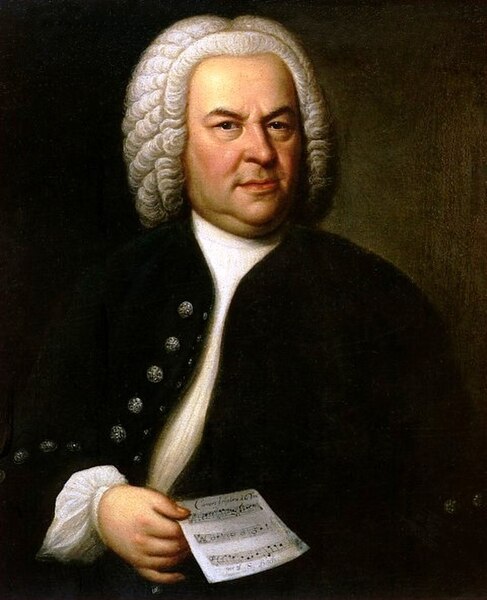The Goldberg Variations, BWV 988, is a musical composition for keyboard by Johann Sebastian Bach, consisting of an aria and a set of 30 variations. First published in 1741, it is named after Johann Gottlieb Goldberg, who may also have been the first performer of the work.
The Quodlibet as it appears in the first edition
Haussmann's portrait of Bach depicts him holding the manuscript to BWV 1076, which is also the thirteenth canon in the Goldberg Canon cycle.
Johann Sebastian Bach was a German composer and musician of the late Baroque period. He is known for his prolific authorship of music across a variety of instruments and forms, including; orchestral music such as the Brandenburg Concertos; solo instrumental works such as the cello suites and sonatas and partitas for solo violin; keyboard works such as the Goldberg Variations and The Well-Tempered Clavier; organ works such as the Schubler Chorales and the Toccata and Fugue in D minor; and choral works such as the St Matthew Passion and the Mass in B minor. Since the 19th-century Bach Revival, he has been generally regarded as one of the greatest composers in the history of Western music.
1748 portrait of Bach, showing him holding a copy of the six-part canon BWV 1076.
Johann Ambrosius Bach, 1685, Bach's father. Painting attributed to Johann David Herlicius [de]
The Wender organ Bach played in Arnstadt
Organ of the St. Paul's Church in Leipzig, tested by Bach in 1717



![Johann Ambrosius Bach, 1685, Bach's father. Painting attributed to Johann David Herlicius [de]](https://upload.wikimedia.org/wikipedia/commons/thumb/e/e0/Johann_Ambrosius_Bach.jpg/422px-Johann_Ambrosius_Bach.jpg)

